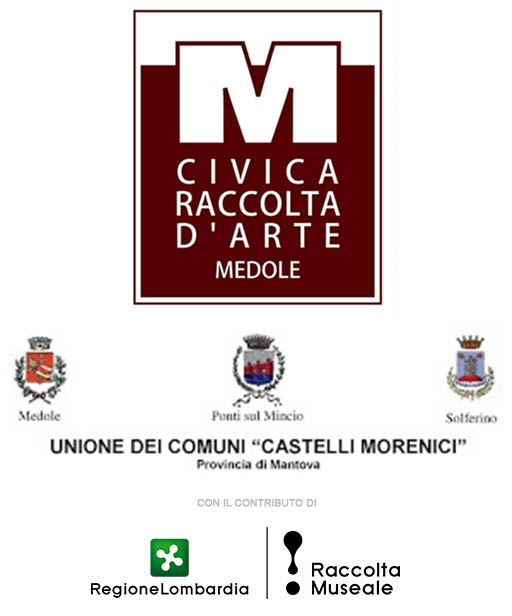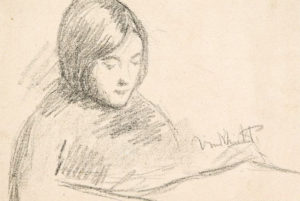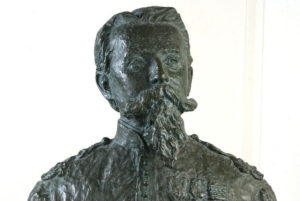10 – The Pesentis, Ferrara, and naturans nature
AUDIOGUIDA:
In this section, we encounter the work of the Pesenti family from Medole, exceptional collectors who left their mark on all the art of our province. Domenico is now unanimously recognised as “the father of Mantuan painting”: his works feature intense use of chiaroscuro, are absorbed, and silent, and maintain dark tones crossed by metaphysical lights. Here we think, in particular, of the interiors of the Florentine churches that made him famous and that are still among the most beautiful creations of all the art of Mantua.
His nephew Vindizio, who had always been at the side of his illustrious uncle and spiritual father, dedicated his life to art and the search for beauty. His reassuring and fortunate closeness to Domenico allowed him to create an intense and fruitful artistic period. The pieces exhibited in this room are very different from each other and can only provide suggestions with respect to his work. The oil on canvas is a splendid still life that seems to banish the “memento mori” inherent in this type of representation. The design creates an extremely intimate and quiet atmosphere. The strokes sketch a scene of evening reflection, in which, in the calm of her own room, a girl rediscovers the imaginative power of reading something that will remain forever unknown to us. The imposing bust in glazed plaster dedicated to the Garibaldian Giovanni Acerbi is in its natural position among these works. On display in important exhibitions, the Pesentian portrait is a work that unites both the celebratory and the commemorative aspects, a distillation of research and tradition. While the gaze is turned elsewhere, towards an indefinite point that nonetheless transcends the immediacy of actual reality, it seems to reaffirm the treatment of the official portraiture of the nineteenth century; the firm features that nonetheless tend towards an apparent dissolution are linked to more avant-garde research that seems to echo both Medardo Rosso and vague Futurist turmoils.
Leaving the elegant room, you encounter the powerful work by Alfredo Filippini, Sacrificio per una vita libera. The painted terracotta represents a precious gift that the doyen of the Ferrara artists wanted to make to our collection. The piece, embodied in an ascending twist, hovers between two extreme, liminal moments: that of captivity and that of birth. If the chaining of the character reminds us of Michelangelo’s Prigioni, the small existence next to him is an enlightened hope.
The next room that opens on your right is the last on the floor that houses works from the collection; here you can truly immerse yourself in the feeling of the Mantuan landscape and see how this feeling towards nature takes on a phenomenon of movement, of birth, in a fully formed perspective. Starting from the eminently “Mantuan” work by Guido Resmi, we then come to the works by the painter and engraver from Suzzara, Angelo Boni: heritage of the naturalistic faction with a rich, generative, maternal vision. Enos Rizzi from Castiglione renews the tradition of the Mantuan landscape through a total, panicked collapse in living matter. Through this “investigator of the limits”, we arrive here at the last isthmuses of the figurative, where recognisable reality dissolves into a stratification of colours, the weave that keeps the work on the limit of the form.
- Vindizio Nodari Pesenti, Lettura, 1935-1940
- Vindizio Nodari Pesenti, Giovanni Acerbi


